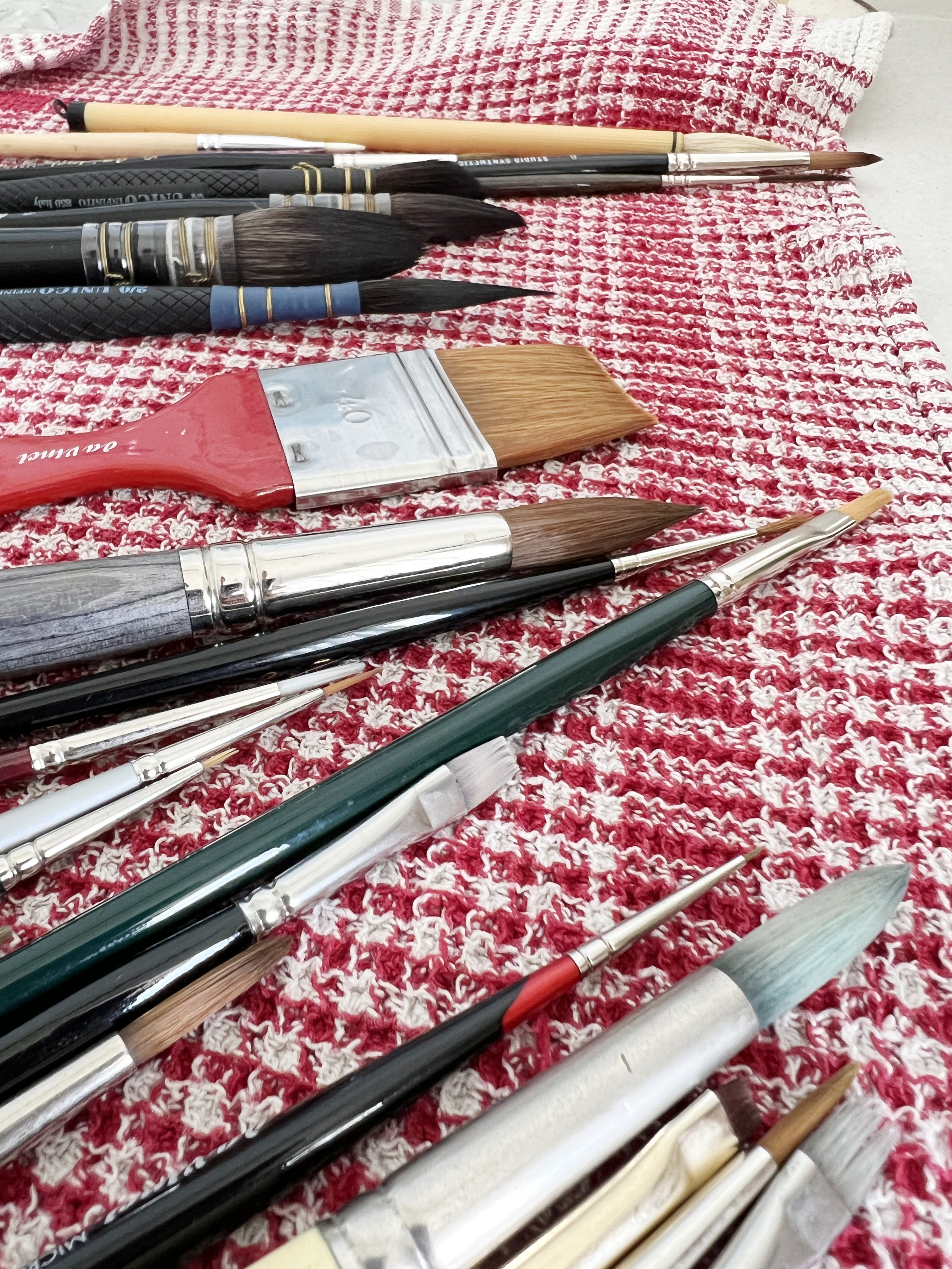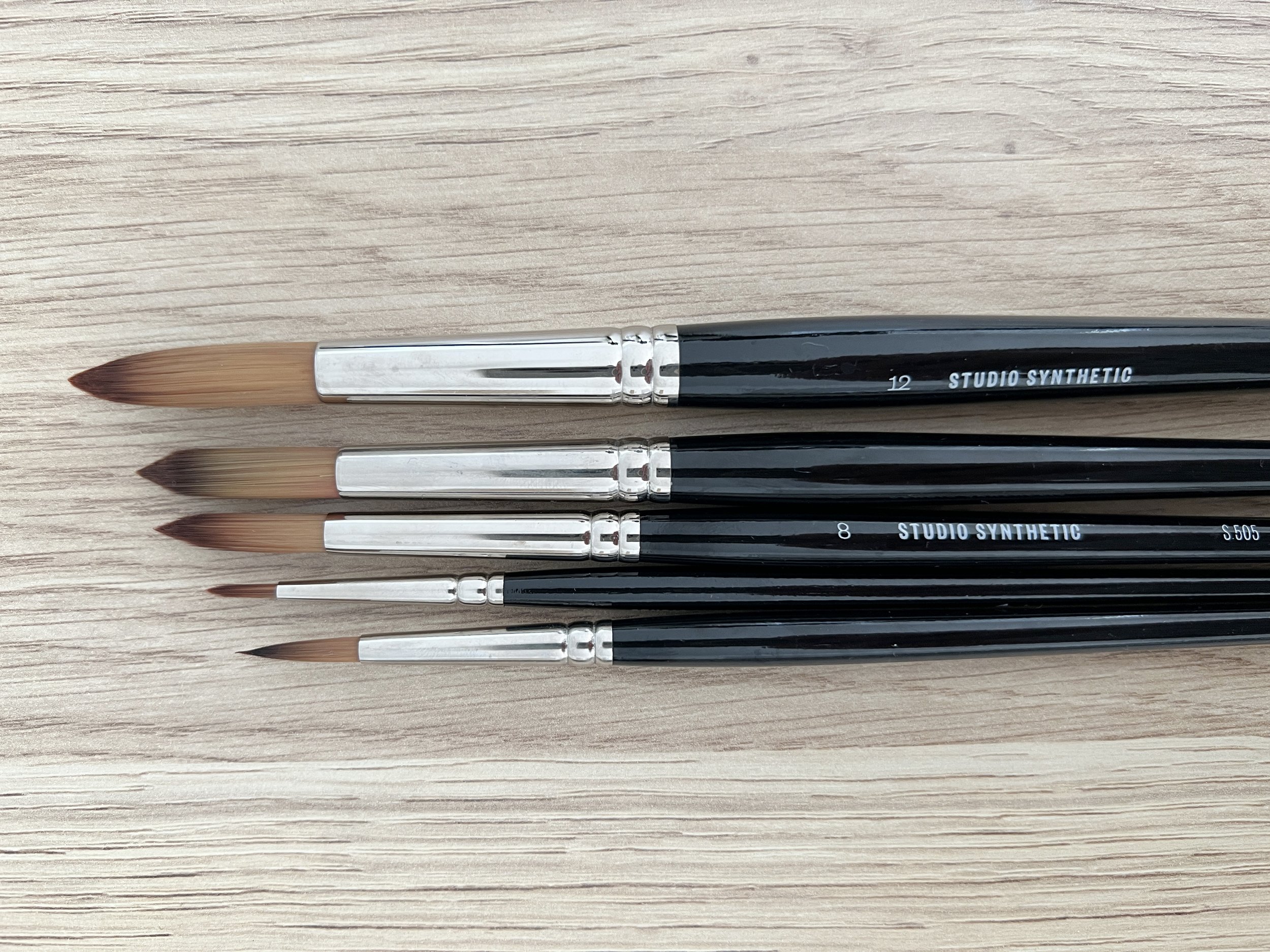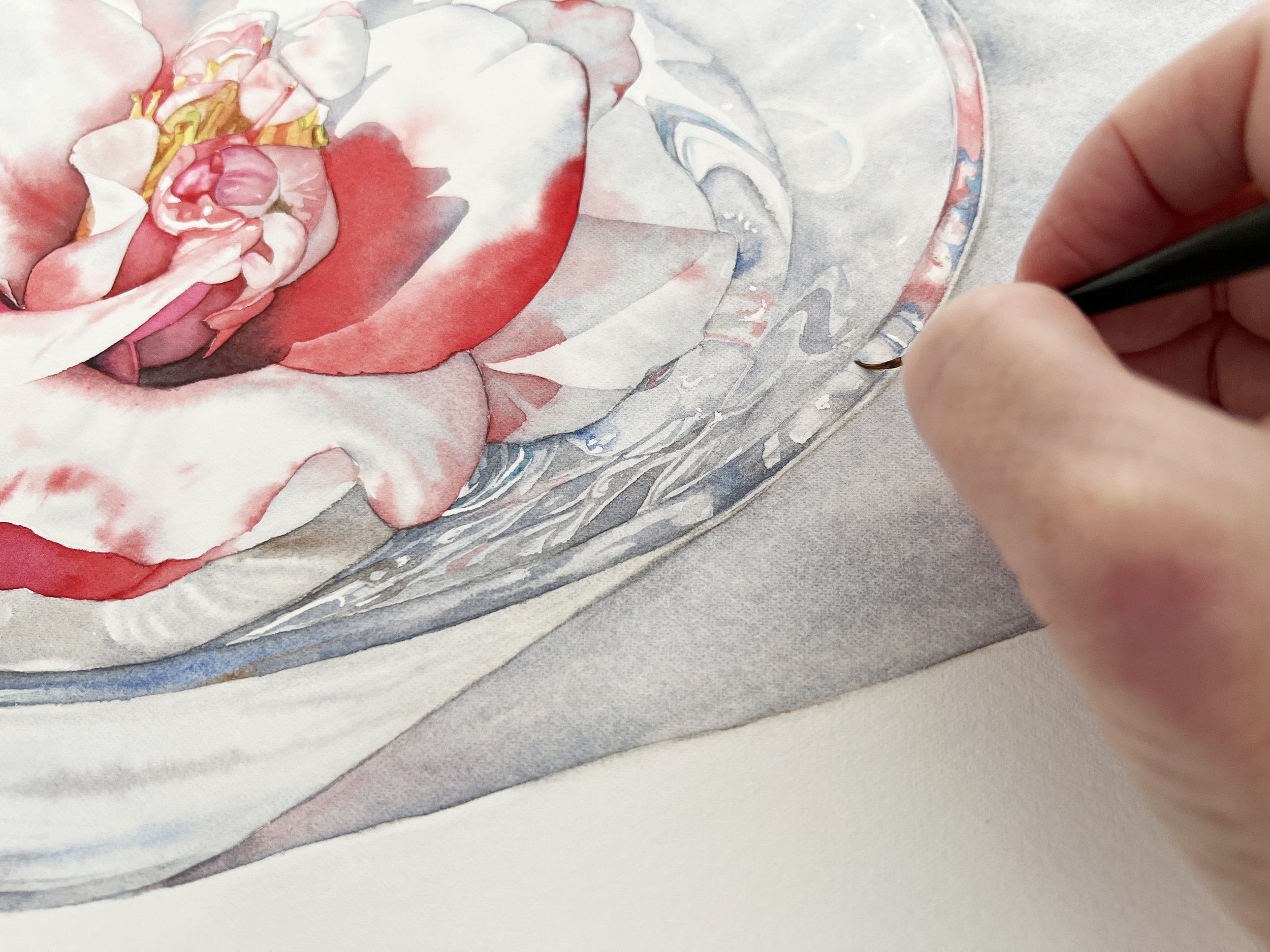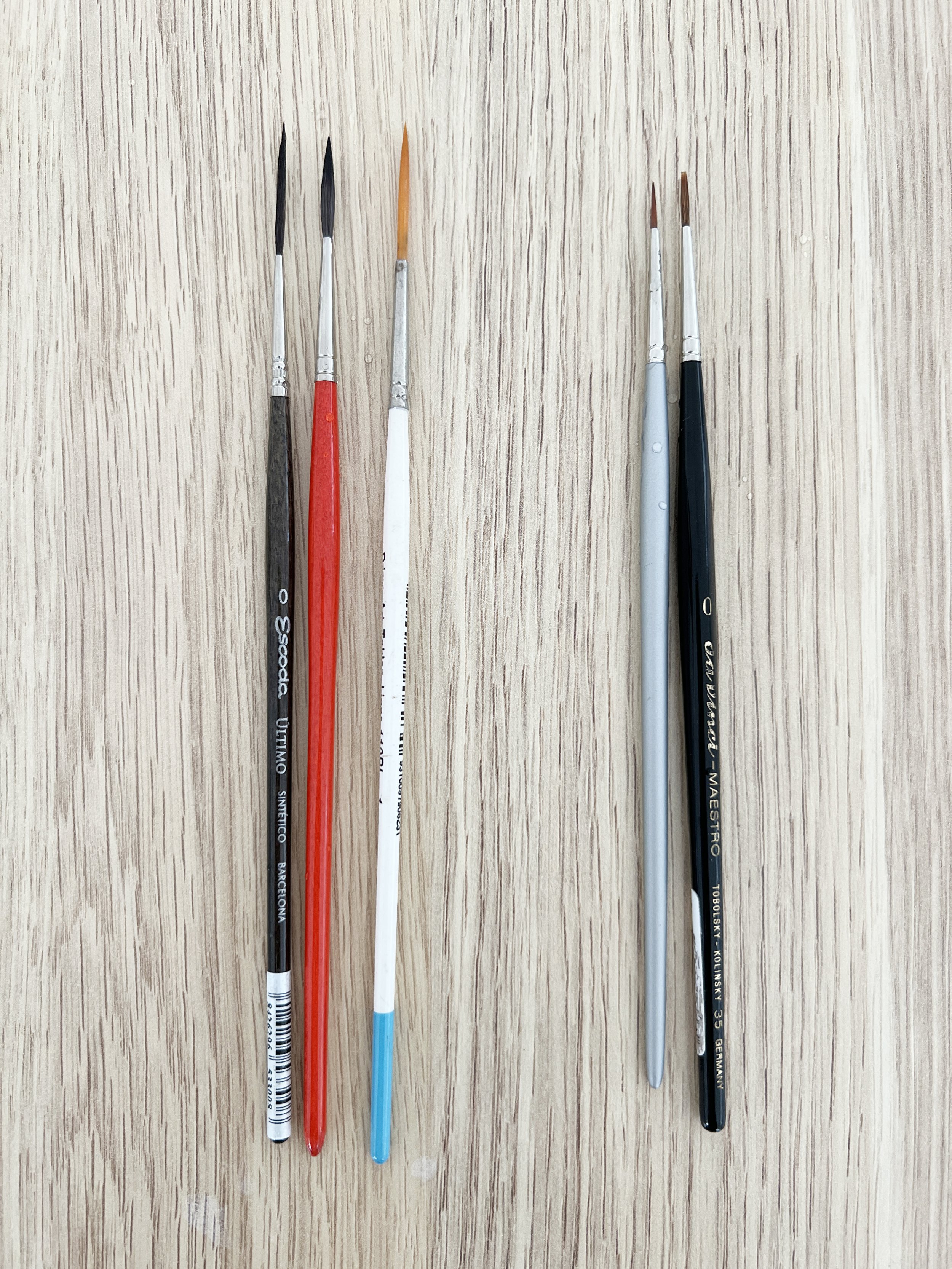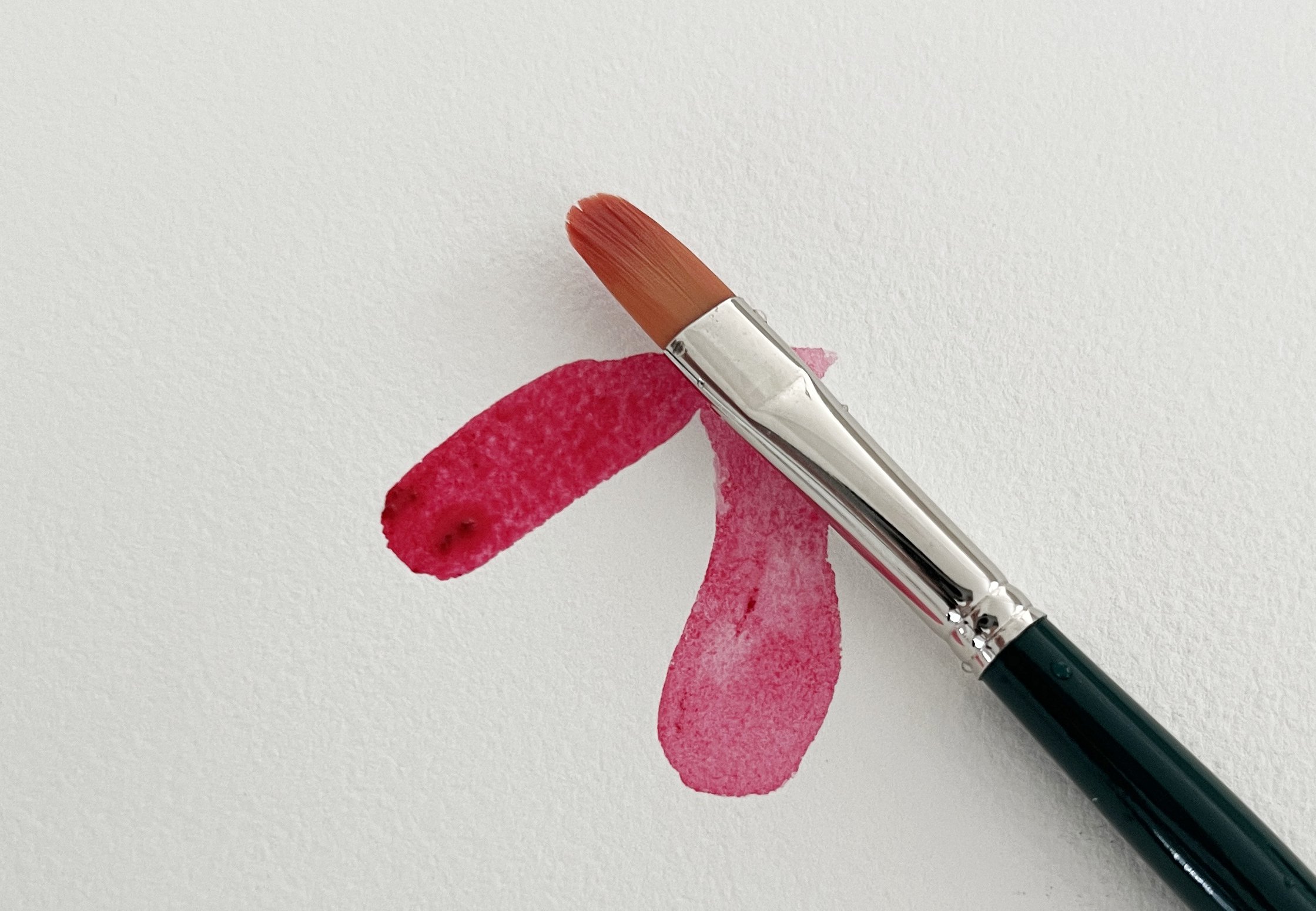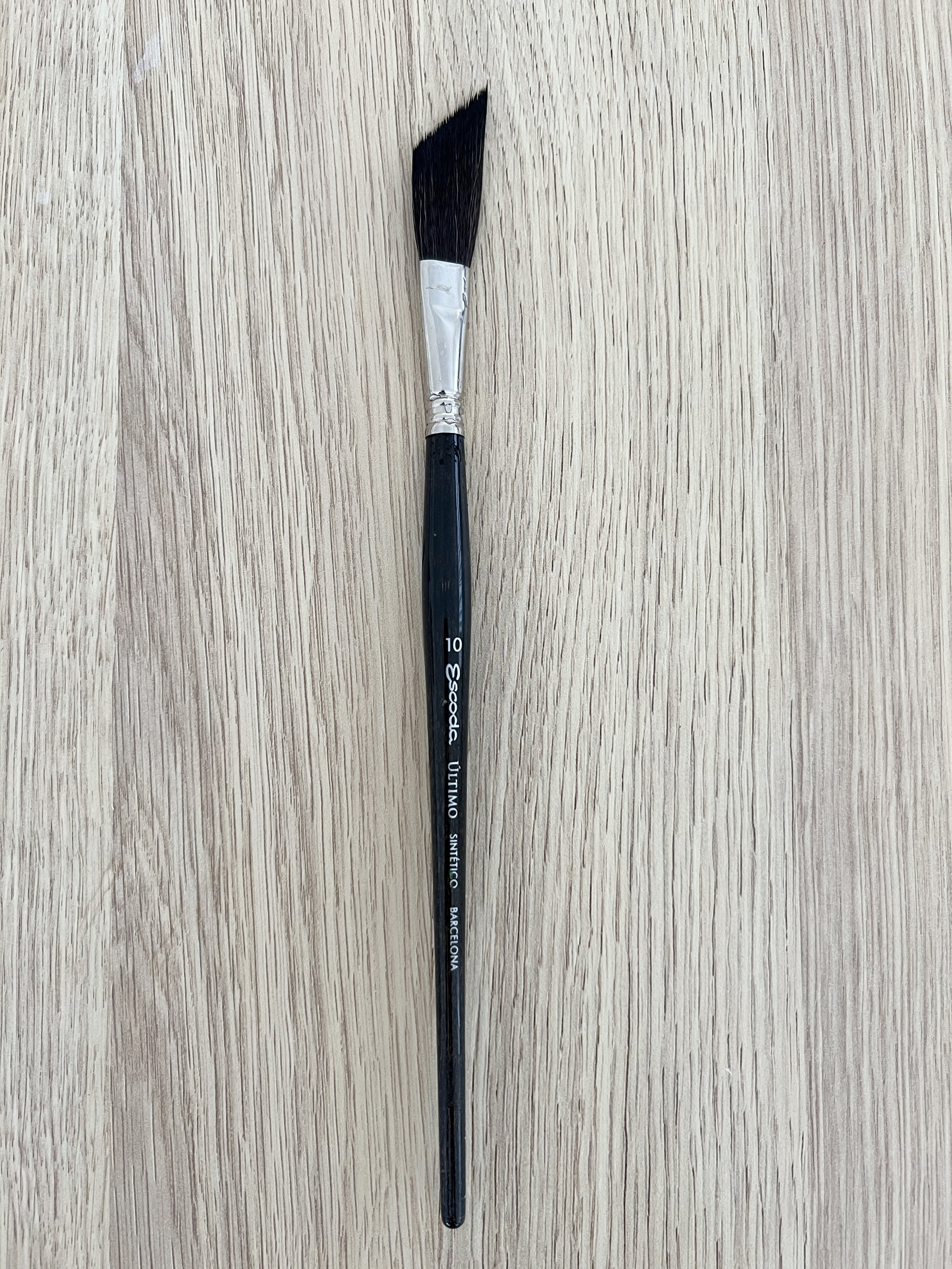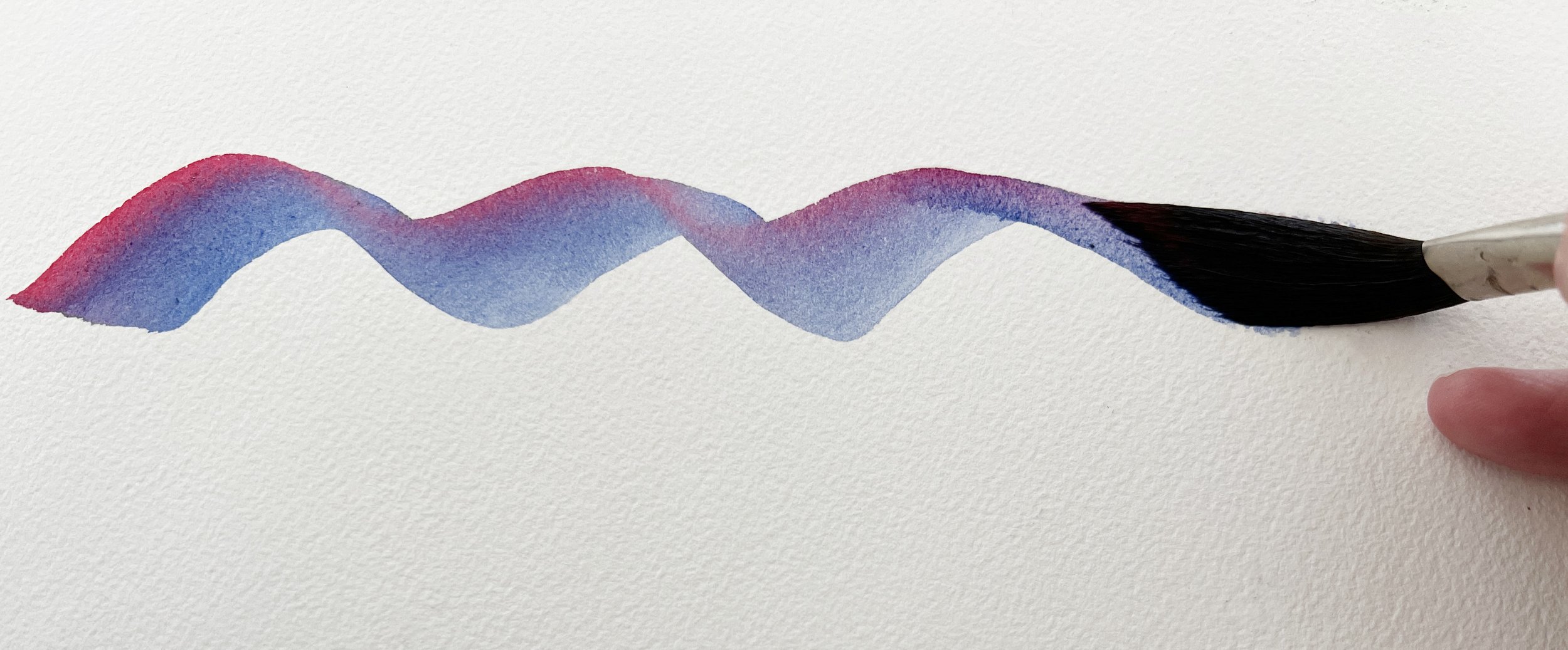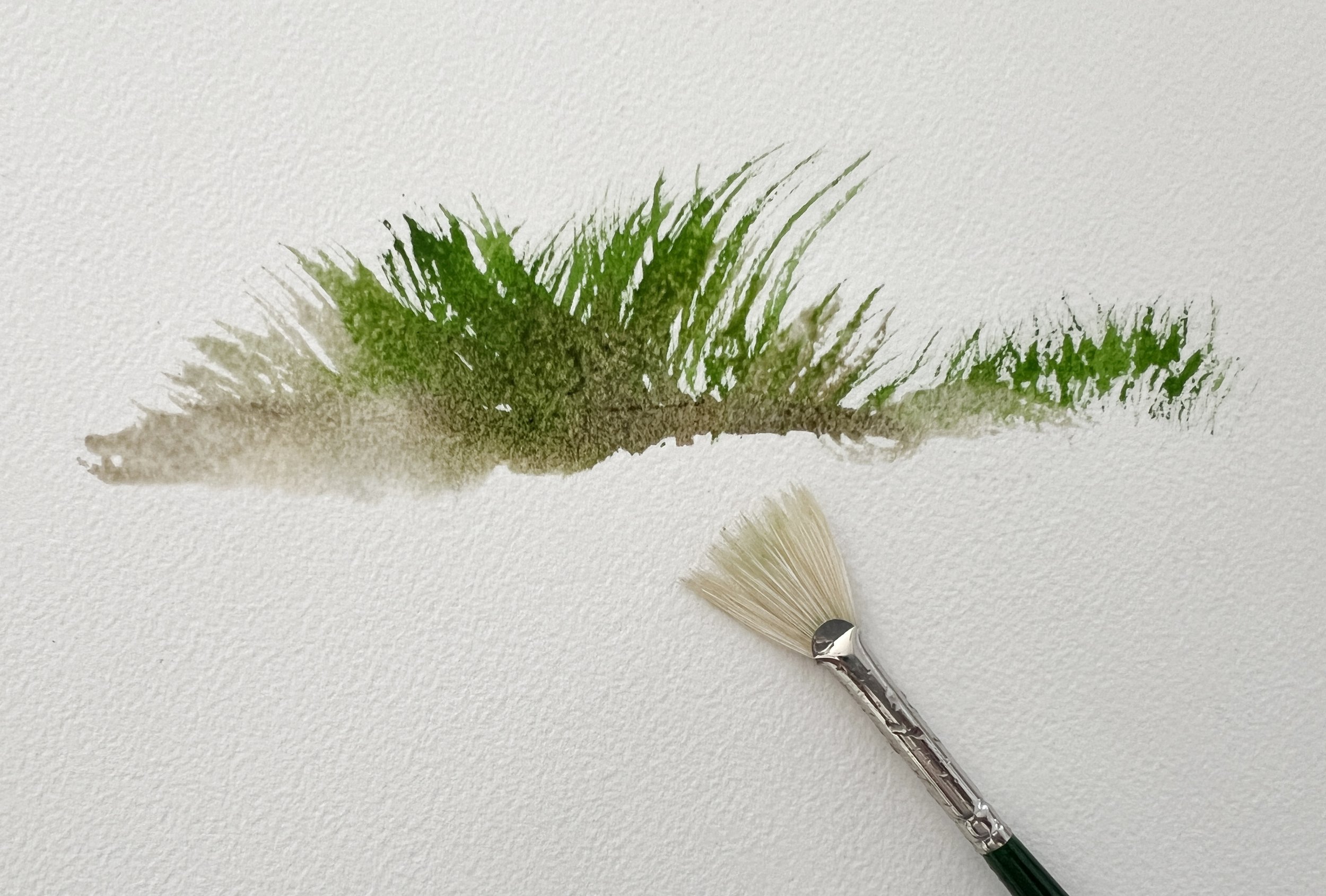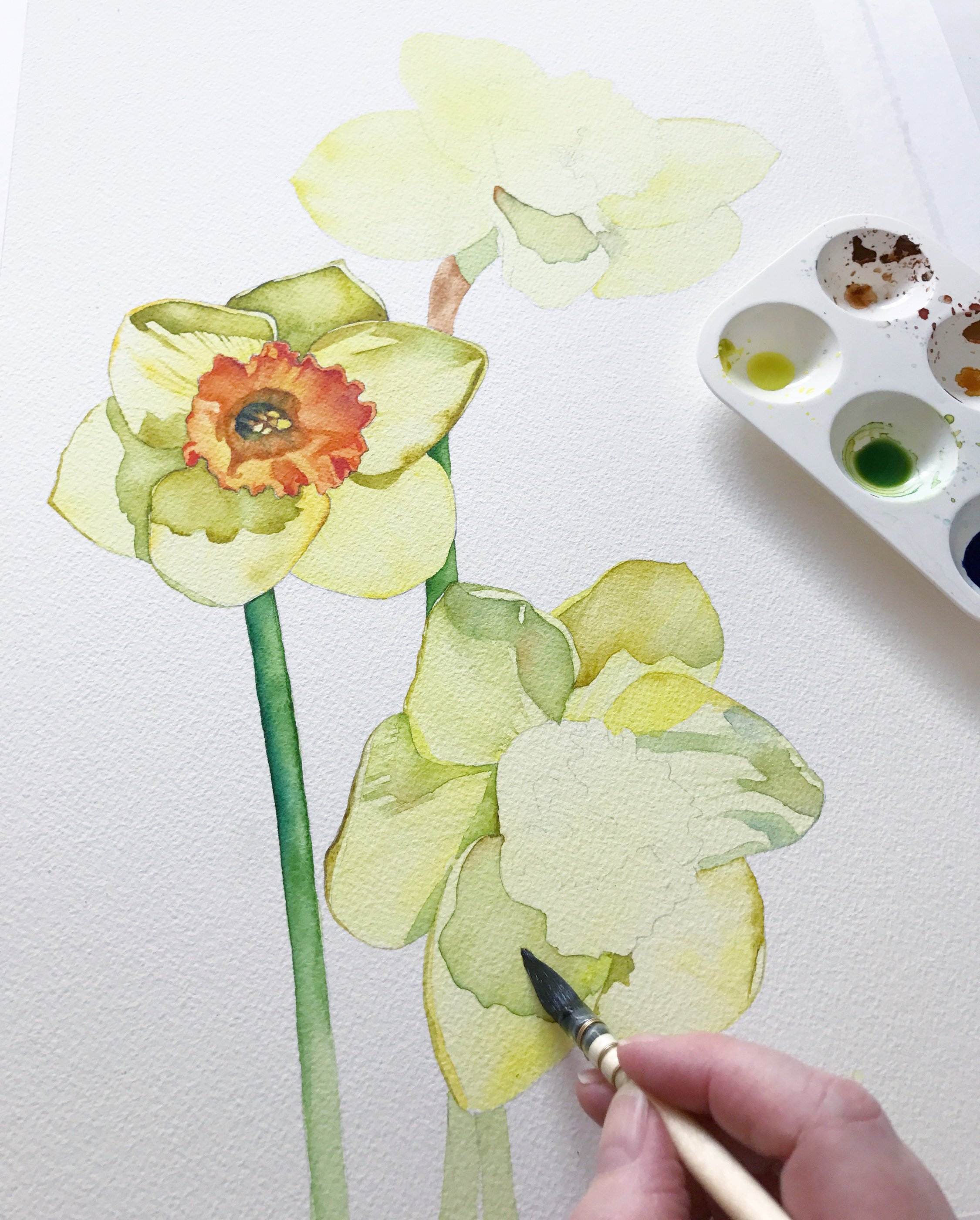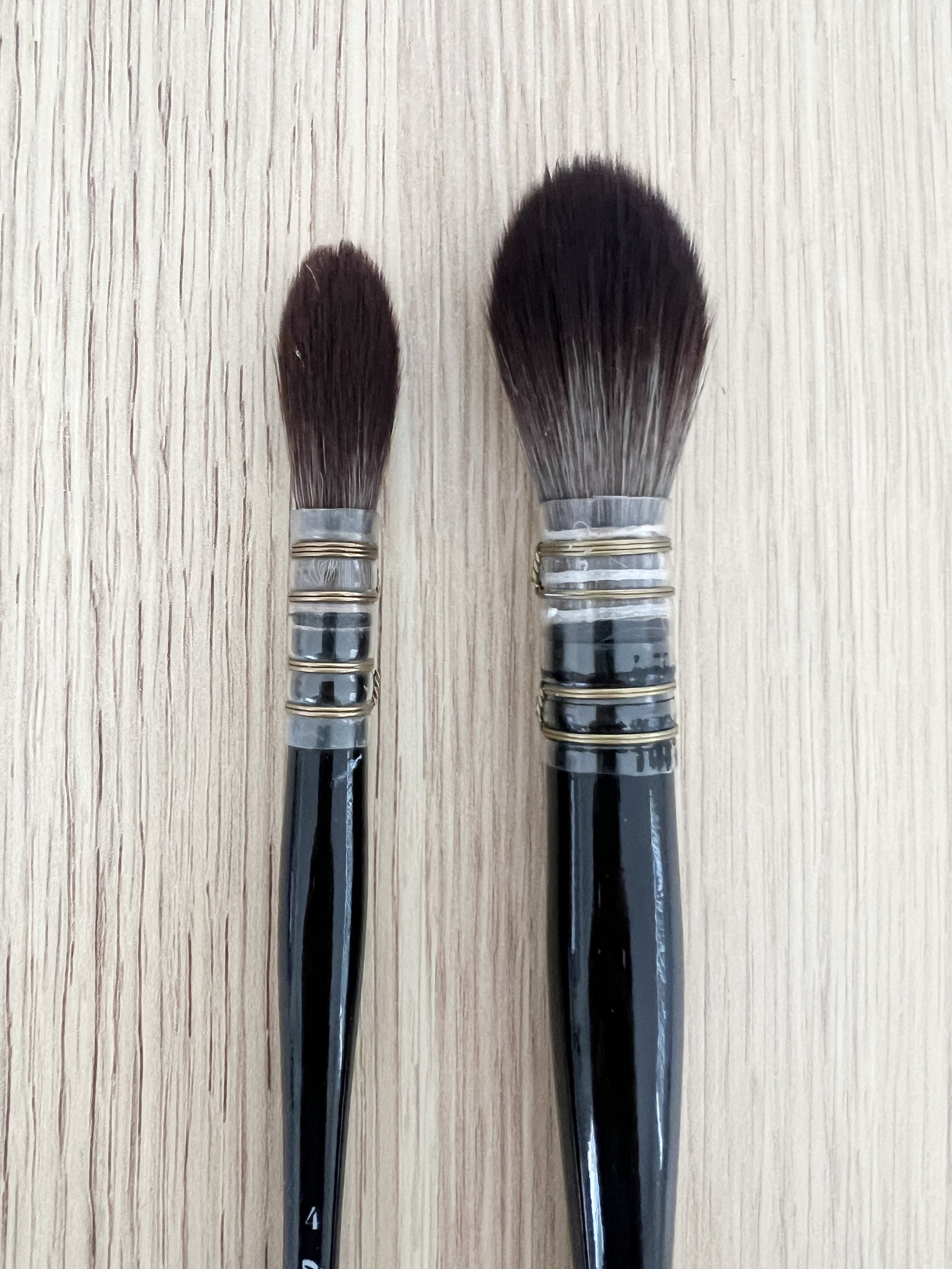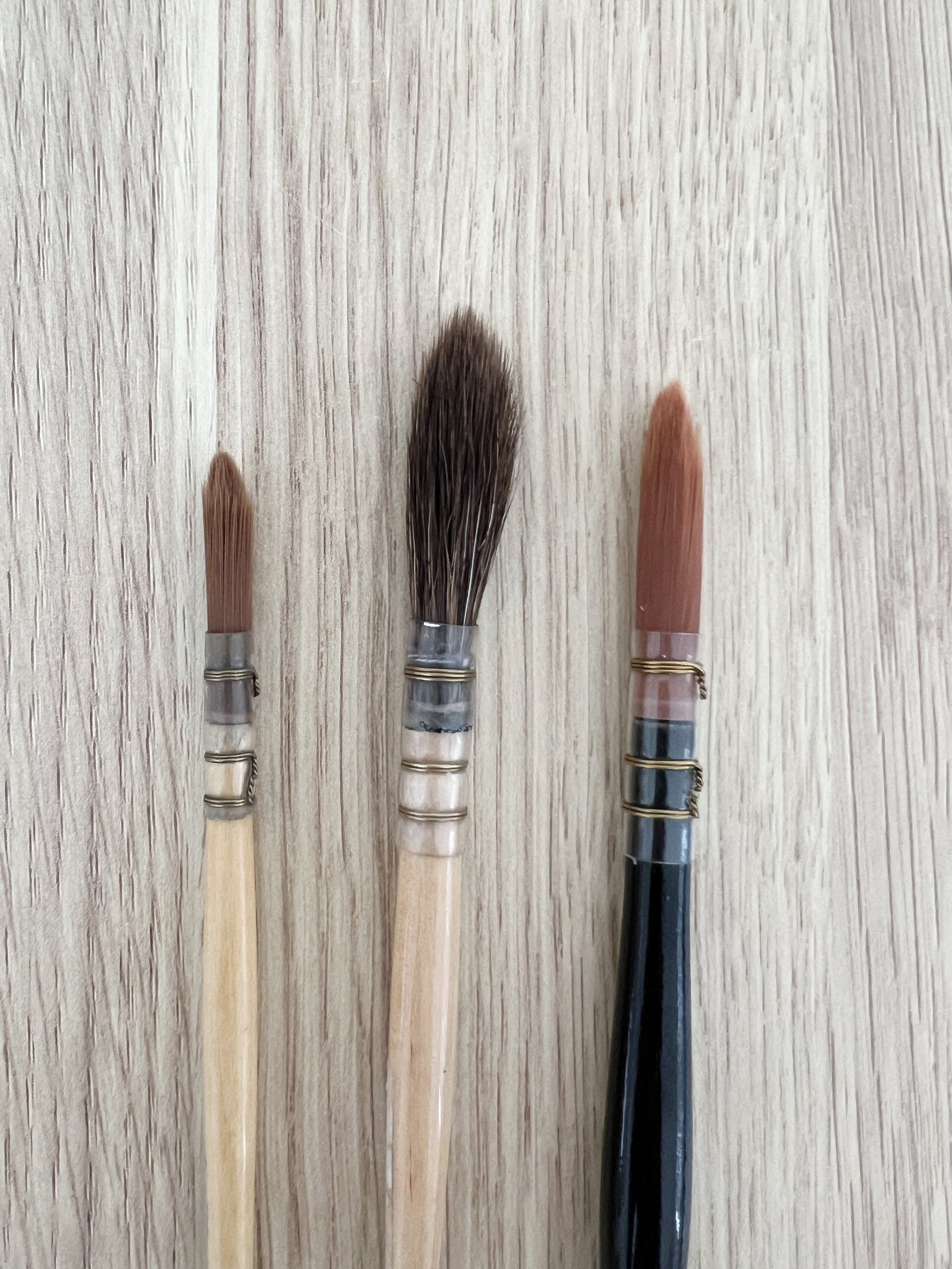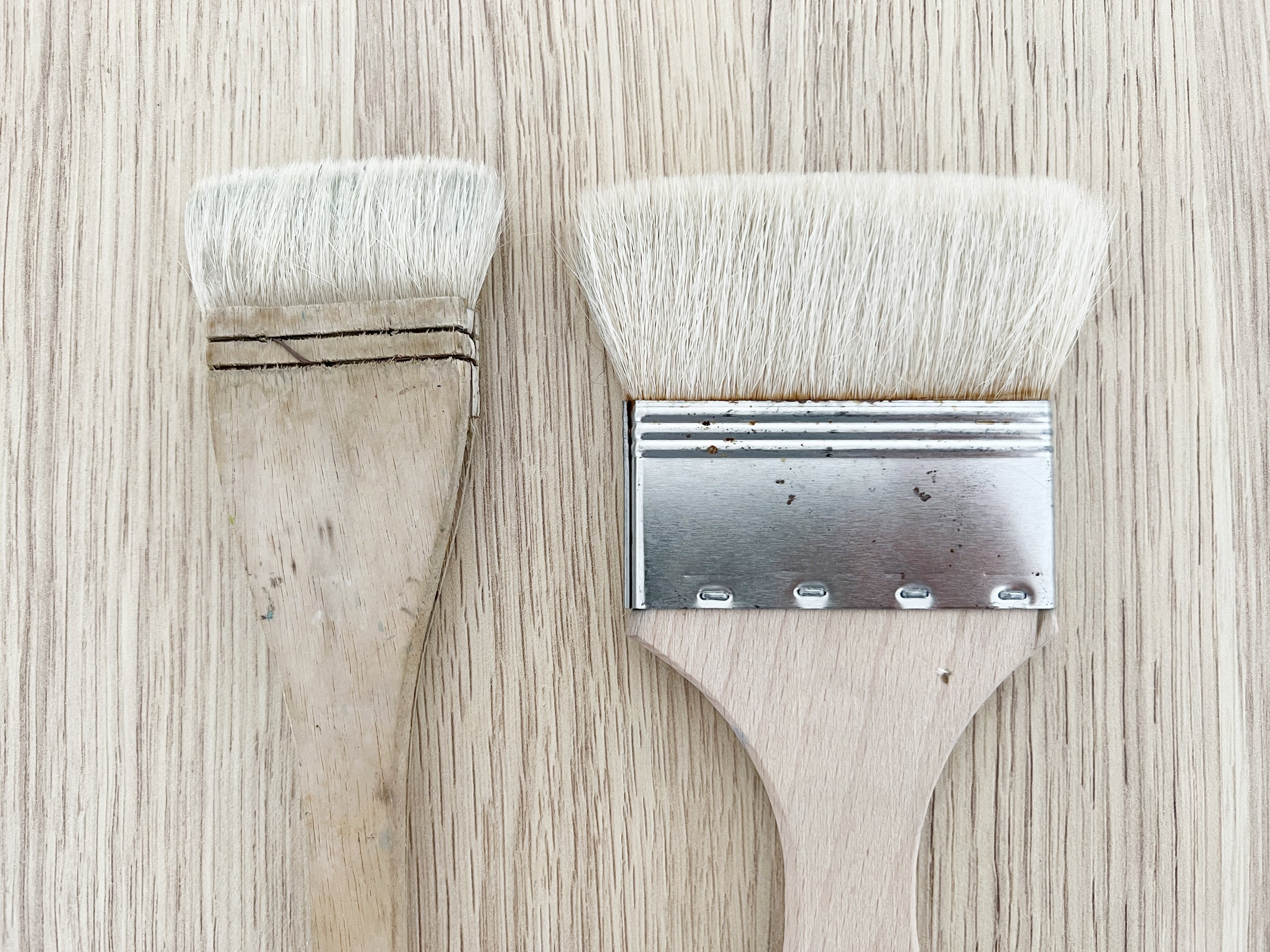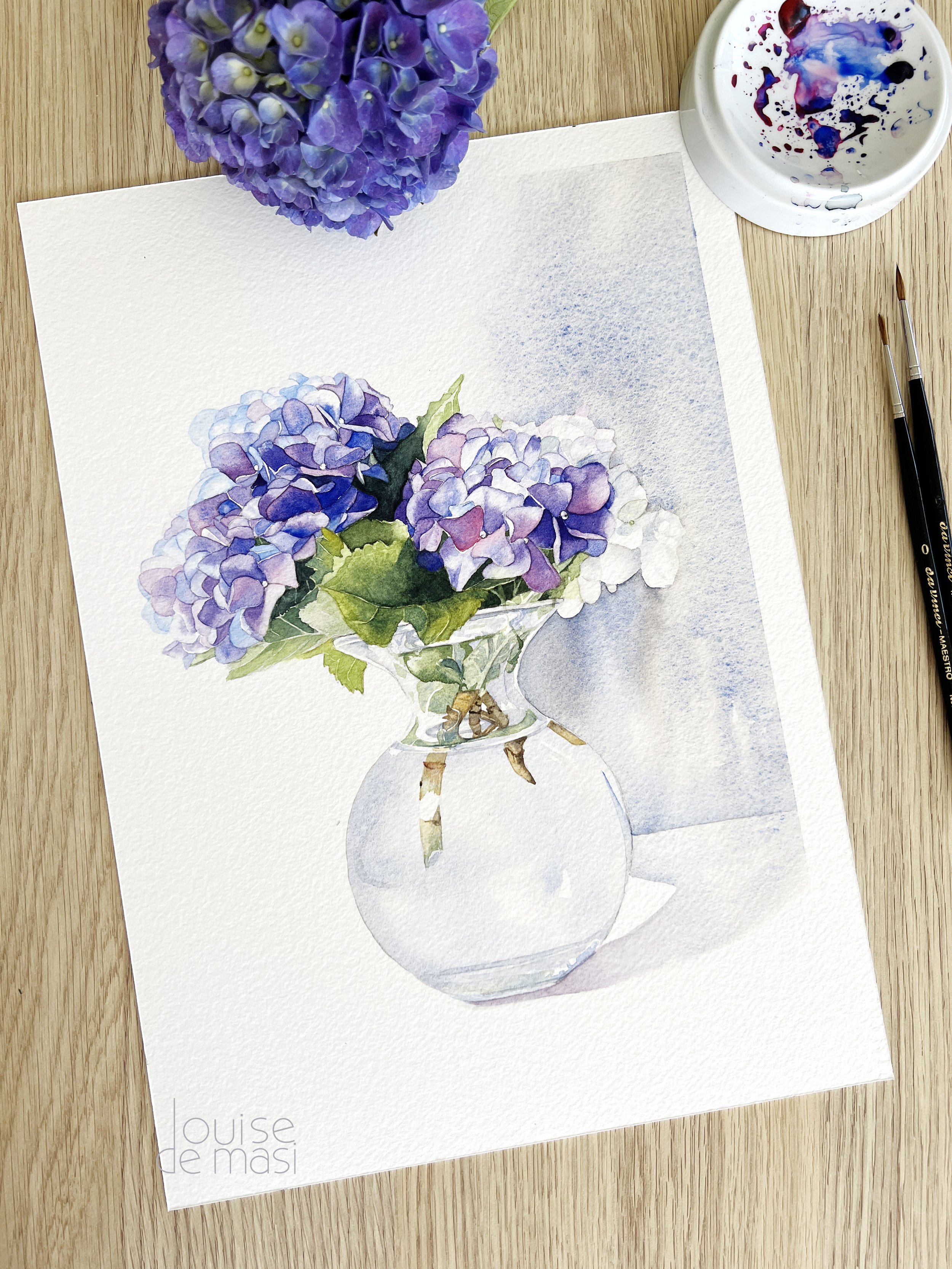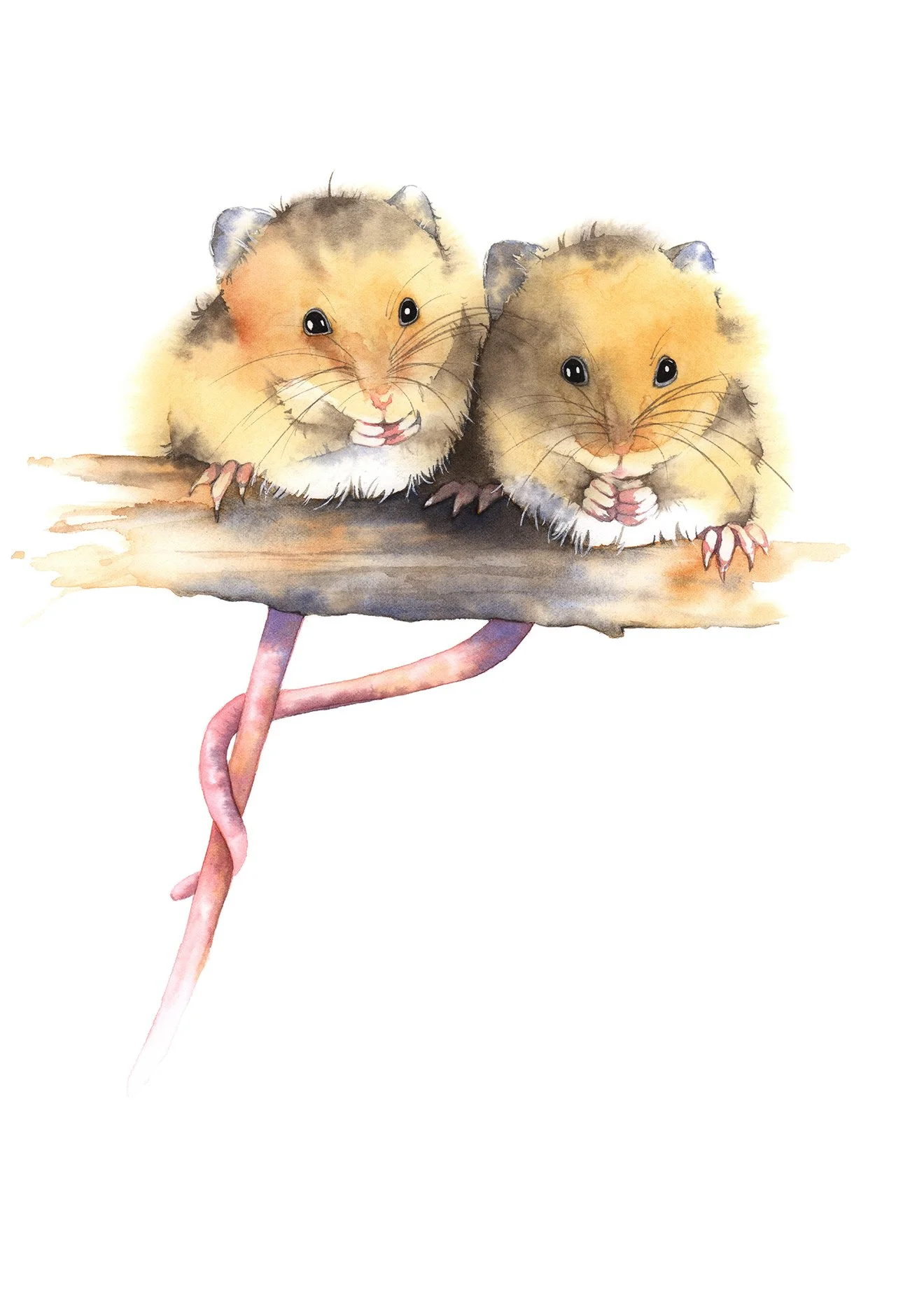Choosing the Right Watercolour Brush
A Guide to Brush Shapes
All the different bristle types and brush shapes- where do you start?
Too many brushes to choose from!
When it comes to watercolour painting, the brush you choose can make a world of difference. While brush size and bristle type are important, the shape of the brush plays a crucial role in determining the strokes and textures you can achieve. If you've ever felt overwhelmed by the variety of brushes available, don’t worry - you’re not alone!
I remember the first time I walked into an art store, utterly bewildered by the sheer number of options in front of me. Should I grab a round brush? A flat one? What on earth is a cat’s tongue brush?
Over the years, I’ve tested lots of them, and now I want to share what I’ve learned with you. Let’s have a closer look at some of the most commonly used watercolour brushes and explore the unique ways each can enhance your paintings.
Type of brushes
Some of my brushes drying after I washed them.
From soft, supple rounds to angular flats, each brush has its own unique role in creating texture, precision, and flow. Whether you're just beginning your watercolour journey or refining your technique, understanding the different types of paint brushes will help you make the right choice for your painting style and goals.
Round Brushes
If I had to choose just one brush to take with me to a deserted island (assuming there’s watercolour paper on this island, of course), it would be a round brush. These brushes are the workhorses of watercolour painting, and for good reason. With their tapered shape and pointed tip, they offer an incredible range of mark-making possibilities.
You can create everything from whisper-thin lines to broad, sweeping strokes - all with a single brush! The trick is to adjust the pressure: light pressure for fine details, and heavier pressure for broader strokes. Round brushes are fantastic for general painting, detailed work, and fluid line variation. If you’re just starting out, investing in a high-quality round brush with a fine point will serve you well for years to come. Trust me, this is one brush you don’t want to be without!
I absolutely adore DaVinci brushes for several reasons.
Firstly, their impeccable craftsmanship never fails to impress me. The attention to detail and precision in each brush is evident, reflecting the brand's long-standing reputation for excellence. Secondly, the range of brush shapes and sizes offered by DaVinci is truly remarkable.
Whether I'm working on fine details or broad strokes, I can always find the perfect brush to suit my needs. Additionally, the high-quality synthetic and natural hair brushes from DaVinci provide an exceptional painting experience.
The bristles hold paint perfectly, allowing for effortless blending and smooth application. Lastly, the durability of DaVinci brushes is unparalleled. They withstand frequent use and maintain their shape, ensuring that they will be cherished tools in my artistic journey for years to come. Some of my Da Vinci round brushes are ten years old now and they are still going strong. You can find which DaVinci brushes I use here.
My favourite round brushes are Da Vinci Maestros - series 35.
A good alternative of top-quality watercolour brushes that won’t break the bank are these Studio brushes from Jacksons. They are synthetic brushes, which perform very similar to natural hair brushes. I've come to love them so much, that I created a whole branded range of them, together with Jacksons. You can read more about my experience with them in this blog post.
Jackson's Studio Synthetic round brushes - great brushes if you are just starting out.
Flat Brushes
Flat brushes are your best friend when you need bold, defined strokes and sharp edges. Unlike round brushes, which have a tapered tip, flat brushes have straight bristles with a squared-off end. This design allows them to hold a lot of water and pigment, making them ideal for laying down smooth washes, filling large areas, and creating crisp lines.
Assorted flat brushes.
Picture yourself painting a vast sky - using a round brush could take forever, but a few confident strokes with a flat brush, and voilà! A beautiful sky in moments.
These brushes are also great for architectural elements, geometric shapes, and even dry brushing techniques when you want to create texture. If you like structured, controlled strokes, you’ll love the precision a flat brush provides.
Liner and Rigger Brushes
Have you ever struggled to paint those impossibly fine details that require a steady hand? That’s where liner and rigger brushes come in.
These brushes are designed for precision and control, featuring thin bristles that hold a small amount of paint. Their ability to create uninterrupted, fluid, delicate lines makes them a dream for painting delicate details like grass, whiskers, or fine branches.
Using a liner brush to add fine detailed lines to this glass bowl watercolour painting.
Rigger brushes (longer bristles) on the left- liner brushes (shorter bristles) on the right.
The name ‘rigger’ actually comes from the days of maritime painting when artists needed a brush to paint the thin, elegant rigging lines of ships. Their long bristles help maintain fluidity, even with slight hand movements, making them indispensable for controlled line work. Whether you’re adding the finishing touches to a floral painting or detailing the veins of a leaf, a liner brush will help you achieve that extra level of refinement for adding fine details.
Choosing the Right Brush for Fine Lines
When I want to create thin but loose, expressive marks, I reach for a rigger brush. Its long bristles hold more paint and allow for flowing, less controlled strokes - perfect for organic lines and natural textures. When I need precision, a liner brush gives me more control, making it ideal for crisp, fine details and intricate edges.
Filbert Brushes
Filbert brushes might just be one of the most under-appreciated gems in a watercolourist’s toolkit. They have a distinctive oval-shaped tip that combines the best of both worlds - a mix between a round and a flat brush. The result? Soft, blended edges and a painterly finish that makes everything look effortlessly smooth.
A filbert brush is a flat brush with a curved tip.
You can use a filbert brush for painting flower petals, leaves, and any organic shapes where you want a softer transition. Unlike a flat brush, which gives sharp edges, or a round brush, which might not spread the pigment evenly, filberts allow you to create rounded forms with a natural, blended appearance. They’re particularly wonderful for floral paintings, where soft transitions are key. Give one a try- you might just fall in love!
Dagger Brushes and Angled Brushes
A dagger brush.
The first time I picked up a dagger brush, I wasn’t sure what to expect. The shape is quite unique - imagine a flat brush that has been sliced diagonally, giving it a slanted, teardrop-like tip. This unique shape makes daggers perfect for expressive strokes and fluid movement.
With just a flick of the wrist, you can create delicate petals, sweeping leaves, or even stunning calligraphic marks. If you like to paint botanicals, a dagger brush will quickly become your best friend. It also holds a surprising amount of water and pigment, making it a great tool for spontaneous, gestural brushwork.
Try loading it with two colours at once for a gorgeous blended effect - by gently dipping each side of the brush into different pigments, you can achieve stunning, variegated strokes. Pure magic!
Loading a wet dagger brush with two colours- one colour on the tip and and another colour and the base.
Fan Brushes
Fan brushes look exactly how they sound - like a little fan! Their splayed-out bristles make them fantastic for adding texture to a painting.
If you want to paint wispy grass, dense foliage, soft fur, or even foamy waves, a fan brush can do all of that with ease. By lightly dragging the brush across the paper, you can create a beautifully organic stippled effect.
I don't have much use for fan brushes because I don't paint many landscapes. They’re one of those specialty brushes that you may not use all the time, but when you do, they bring a unique touch to your work.
A fan brush.
Wispy grass painted with a fan brush.
Mop and Quill Brushes
Using a quill brush to paint these daffodils in watercolour.
Mop and quill brushes are the gentle giants of the watercolour world. With their large, rounded, and soft bristles, they hold an enormous amount of water and pigment, making them ideal for creating big, sweeping washes and beautiful wet-into-wet effects. They are my favourite wash brushes! If you love painting loose, fluid backgrounds or soft, atmospheric scenes, a mop brush will be your best friend.
Mop brushes are typically fuller and rounder, often with a shorter, denser shape. I use them for large washes or if I want to cover a large area of the paper with water quickly.
Quill brushes, on the other hand, have a similar shape but are often made with longer hairs and are bound with wire rather than a metal ferrule, giving them extra flexibility. This makes quills feel softer and more responsive, allowing for delicate variations in pressure. Quill brushes, with their nice sharp tips allow you to get into tight corners.
Mop brushes are denser than quill brushes.
Quill brushes hold plenty of water and paint (like mop brushes) but you can paint detail with them.
Both brushes are perfect for expressive painting, where you want to let the water and pigment flow naturally across the paper. They also make blending paint very easy. Softening edges works wonderfully with these types of brushes - I frequently find myself holding a round brush and a mop brush in one hand to easily switch between one and the other.
Hake Brushes
Hake brushes have a distinct, wide, flat shape with super-soft natural bristles, traditionally made from goat hair. These brushes are fantastic for covering large areas on flat surfaces quickly, making them a go-to choice for big, even washes, wetting the paper, or soft blending.
Hake brushes.
If you love painting expansive skies, distant landscapes, or delicate, feathered backgrounds, a hake brush will give you beautifully soft transitions. Their absorbency and ability to create subtle, airy textures make them a favourite among landscape painters. They are great for smoothing out patchy washes as well.
My final 2 Cents
A quill brush in action.
Every watercolour brush has its own personality, and part of the joy of painting is discovering which ones suit your style best.
Whether you prefer the control of a round brush, the expressive strokes of a dagger, or the soft textures of a filbert, experimenting with different shapes can open up a whole new world of creative possibilities.
No two artists will have the exact same go-to brushes, so don’t be afraid to try something new and see what works best for you. Whatever brush type you feel comfortable with, is the right brush for you!
So, grab your brushes, dive into your paints, and start exploring. You never know - your new favourite brush might just be the one you least expected. And if you're wondering how to care for your brushes properly, we have a specially crafted blog post all about proper care, storage, and materials.
Happy painting! 🎨
If you are interested in learning to paint in watercolour, I have over 200 online, voiced over watercolour tutorials for all skill levels.


